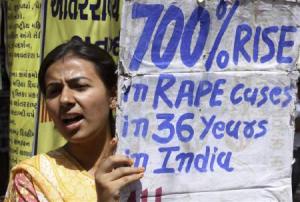Children are innocent, hence they form the most vulnerable part of our society. Their innocence needs to be protected but unfortunately it is abused by their most trusted “friends”. Most sexual abuse offenders are acquainted with their victims; approximately 30% are relatives of the child, most often brothers, fathers, uncles or cousins; around 60% are other acquaintances, such as “friends” of the family, babysitters, or neighbors; strangers are the offenders in approximately 10% of child sexual abuse cases.
According to Medline Plus. U.S. National Library of Medicine Child sexual abuse can occur in a variety of settings, including home, school, or work. The effects of child sexual abuse can include depression, post-traumatic stress disorder,anxiety, complex post-traumatic stress disorder, propensity to further victimization in adulthood, and physical injury to the child, among other problems. Sexual abuse by a family member is a form of incest, and can result in more serious and long-term psychological trauma, especially in the case of parental incest.
19% of the world’s children live in India, which constitutes 42% of India’s total population.
In 2007 the Ministry of Women and Child Development published the “Study on Child Abuse: India 2007.”It sampled 12447 children, 2324 young adults and 2449 stakeholders across 13 states. It looked at different forms of child abuse: physical abuse, sexual abuse and emotional abuse and girl child neglect in five evidence groups, namely, children in a family environment, children in school, children at work, children on the street and children in institutions.
The study’s main findings included: 53.22% of children reported having faced sexual abuse. Among them 52.94% were boys and 47.06% girls. Andhra Pradesh, Assam, Biharand Delhi reported the highest percentage of sexual abuse among both boys and girls, as well as the highest incidence of sexual assaults. 21.90% of child respondents faced severe forms of sexual abuse, 5.69% had been sexually assaulted and 50.76% reported other forms of sexual abuse. Children on the street, at work and in institutional care reported the highest incidence of sexual assault. The study also reported that 50% of abusers are known to the child or are in a position of trust and responsibility and most children had not reported the matter to anyone.
Child abuse in India is often a hidden phenomenon especially when it happens in the home or by family members. Focus with regards to abuse has generally been in the more public domain such as child labour, prostitution, marriage, etc. Intra-family abuse or abuse that takes place in institutions such as schools or government homes has received minimal attention. This may be due to the structure of family in India and the role children have in this structure.
Children in India are often highly dependent on their parents and elders; they continue to have submissive and obedient roles towards their parents even after they have moved out of their parental home. This belief that parents and family are the sole caretaker of the child has proved to have negative effects on child protection laws and strategies. Numbers of cases of child abuse in the home are hard to attain because most of these crimes go unreported. Societal abuses that are a result of poverty such as malnutrition, lack of education, poor health, neglect, etc are recognized in various forms by the Indian legal system. But India does not have a law that protects children against abuse in the home.
Mal-treatment of care givers has the potential to emotionally and mentally harm children to a very different degree. Studies in intra-familial child abuse in the US have shown correlation to delinquency, crime, teenage pregnancy, and other psycho social problems.
To know more and help visit
http://www.childlineindia.org.in/rights.htm

